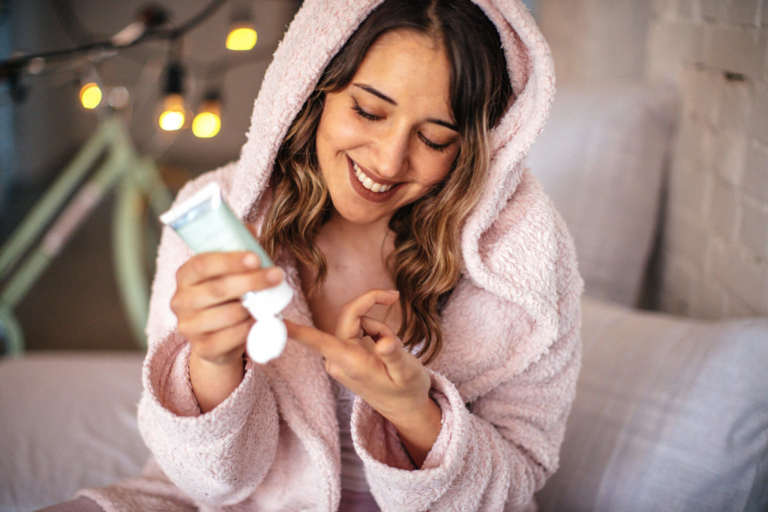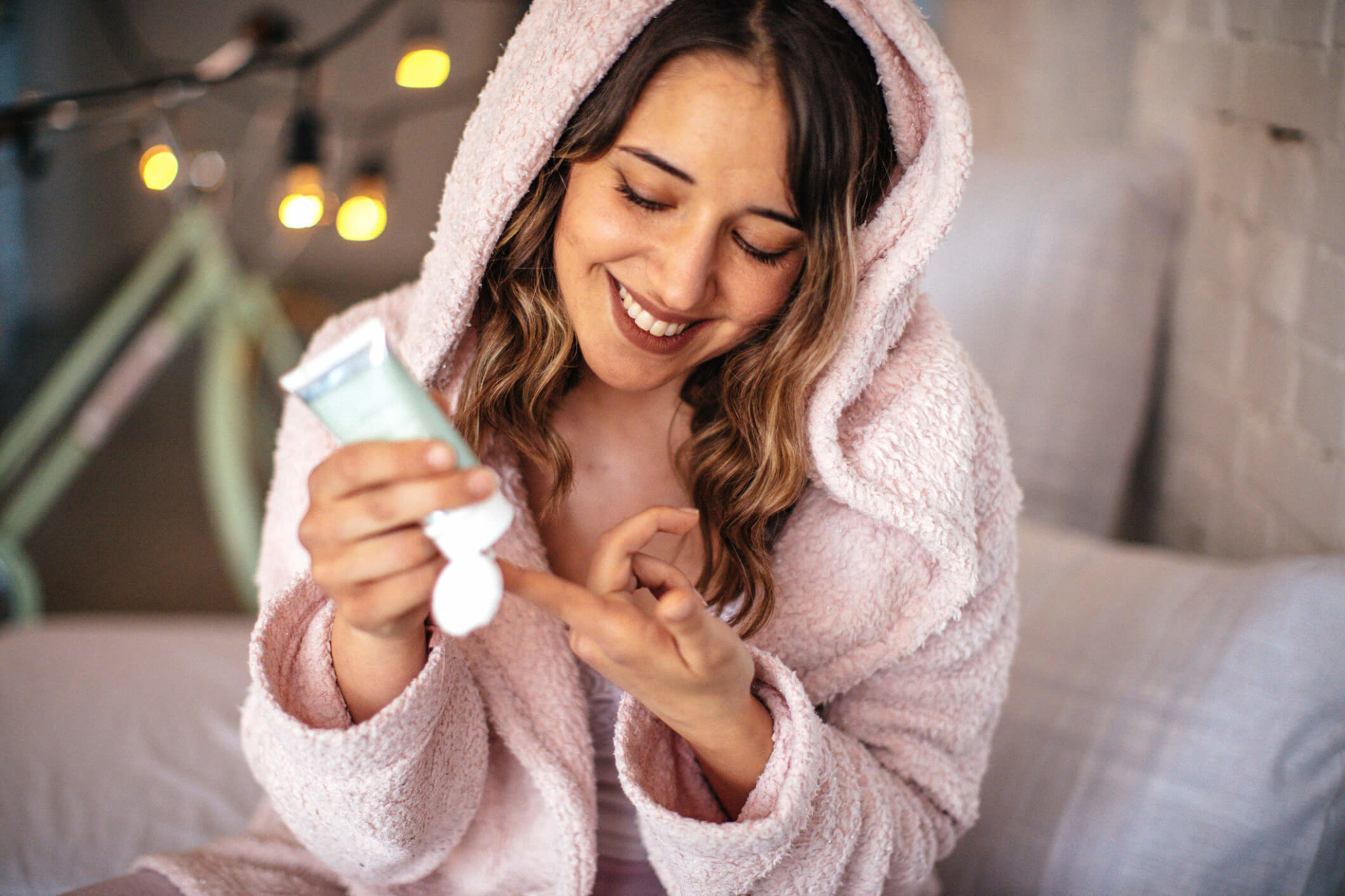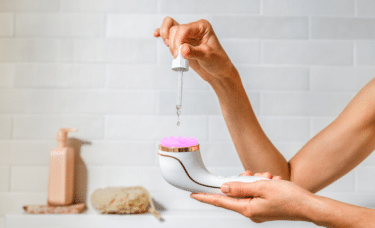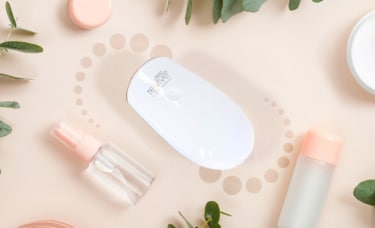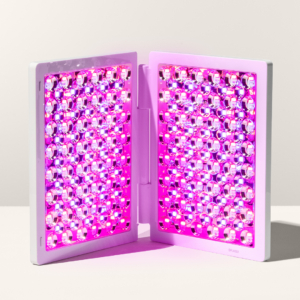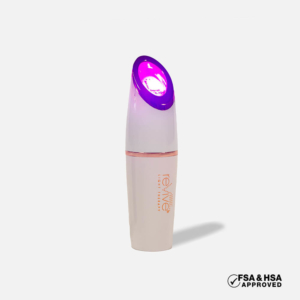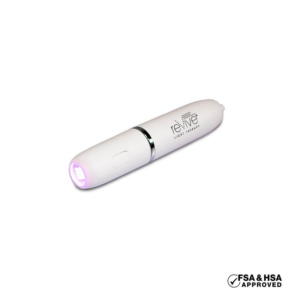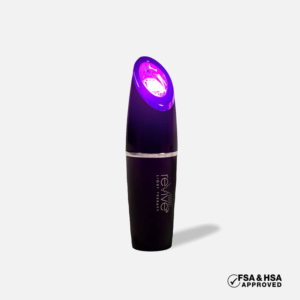Can You Use Retinol and Red Light Therapy Together?
Updated 2/28/2020
Light Therapy with Retinol – A Comprehensive Guide
Everyone wants an edge when it comes to skincare. Many people have discovered the power of retinol to improve the look and feel of their skin. Likewise, many beauty connoisseurs are finding that LED light therapy, such as red light therapy devices, can help reduce wrinkles and make skin appear younger. Can retinol and red light therapy be used together? You may have heard mixed advice. Let’s iron out the wrinkles on the best approach when using these anti-aging treatments.
Table of Contents
What is retinol?
Retinol is another name for Vitamin A₁, a vitamin that is found in foods, such as orange and yellow vegetables and fruits, and used in dietary supplements. Products containing retinol are known as retinoids, but people tend to use the words retinol and retinoid interchangeably.
Retinol has been popular in the beauty industry for decades. It was initially used to treat acne, but in 2007, a University of Michigan study showed that retinol visibly reduced wrinkles in elderly test subjects. That game-changing study spurred a flurry of public interest in retinol’s anti-aging applications, as well as many more studies.
In fact, Harvard Health reports that today, retinoids are the most studied and most used anti-aging compounds on the market.
How does retinol benefit your skin?
Retinol is commonly added to creams and other topical beauty products that go on your skin. Retinol can improve the appearance of skin in multiple ways because it:
- Stimulates the production of collagen to plump out skin
- Improves blood flow to the skin to add richer color
- Softens and lightens damaged areas like sunspots
For these reasons, numerous skin care companies add retinol to their anti-aging products. Prescription retinoids are also available from dermatologists and tend to provide stronger effects.
When should you use retinol?
Usually, the best time to apply a retinol-containing cream is before bed. While your body is at rest, skin cells begin to turn over, making way for new cells. When applied topically, retinol encourages this natural process.
In addition, retinoids break down in sunlight. This is another reason to apply them at night. However, contrary to previous protocols, many retinol products now state that they are safe for use during the day. How you fit it into your day is up to you.
It is important to note that retinol use requires patience. According to Harvard Health, “It takes three to six months of regular use before improvements in wrinkles are apparent—and the best results take six to 12 months.” One way to speed up results might be to combine your retinol regimen with at-home red light therapy, but you have to do so responsibly.
Are there risks of using retinol on skin?
As with any cosmetic or wellness product, users should educate themselves on the risks along with the benefits. Overuse of retinol may lead to retinoid dermatitis—dry, irritated skin. For this reason, dermatologists recommend starting slowly, perhaps every other day before applying a retinoid daily. That being said, a small amount of redness, dryness, and light peeling is to be expected when using retinoids.
Another potential risk is the possibility that retinol increases the skin’s sensitivity to light. The long-held belief about sun sensitivity and retinol has produced mixed research results. However, it is still recommended to limit sun exposure or to use sunscreen regularly. It’s always best to talk to your dermatologist.
How should you combine retinol and red light therapy?
Naturally, if a dermatologist says you should limit your exposure to sunshine while using retinol, the same is true for doing red light therapy at home. Although LED lights don’t produce harmful UV rays like the sun, light therapy can still produce reactions from retinol. That doesn’t mean you can’t use retinol in conjunction with your LED light therapy device, but it does mean you should only use them at separate times.
Will retinoids improve your results from red light therapy?
It was previously thought that an individual could not use both retinol products and LED light therapy. However, the technologies and understanding of both modalities have come a long way in recent years. Here is the important point: Do not apply a retinol product immediately before a light therapy session.
What doctors have to say about supports the idea of using both. Joshua Zeichner, M.D., Mount Sinai’s director of research in dermatology, told Prevention magazine that red light therapy works better with anti-aging creams that include retinol.
However, no one is a substitute for your own doctor. We encourage you to speak with your dermatologist regarding the use of LED light therapy and retinoids in your skincare routine, as some retinol creams are stronger than others. With their blessing, go ahead and combine the two therapies—at the right time.
How to combine red light therapy and retinol for the best results
Using light therapy and retinol together can give your skincare routine a boost. Keep in mind, that you should never apply retinol before light therapy use, as your skin may react unexpectedly. However, retinol can safely be used after light therapy. If you are using retinol and would like to add LED light therapy, follow the steps below.
- Cleanse your face gently and thoroughly
- Pat your skin dry using a towel
- Use your reVive Light Therapy™ device for the directed time
- Wait 5-10 minutes after your light therapy session
- Apply your retinol product
- Apply your moisturizer
- Apply sunscreen if this is your morning routine
Many people find it most convenient to follow this routine just before bedtime. Just make sure to allow enough time to complete all the steps before turning in. Then, sleep tight!
Here’s one more tip to track your results. Before you begin your regimen, take “before” photos. Choose a location with good lighting, perhaps in front of your bathroom mirror. Every few weeks, repeat the photo, from the same angle and at the same time of day. Over time, you will be able to document your progress.
Frequently Asked Questions
What wavelengths are used in light therapy?
- Health and wellness light therapy devices use LEDs that emit light in the blue, amber, red, or infrared range of the light spectrum, depending on the purpose. Energy wavelengths are shorter toward the blue end of the spectrum and longer toward the infrared end of the spectrum. The human eye can see light from about 380 nm (at the blue end) to about 750 nm (at the red end). The infrared waves can penetrate deeply to relieve muscle and joint pain, for example, while blue light works closer to the skin’s surface.
Does light therapy use UV wavelengths?
- Red and infrared LEDs produce no UV rays, so there’s no risk of skin cancer like there is from the sun. LED light therapy uses LEDs that emit non-invasive, non-UV wavelengths to promote cellular growth and relieve a range of conditions.
Is light therapy FSA-eligible?
- The product must be FDA-cleared, FSA/HSA-approved, and designed for medical conditions and pain management to be eligible for reimbursement. Every product must undergo a rigorous approval process to qualify for FSA and HSA benefits.
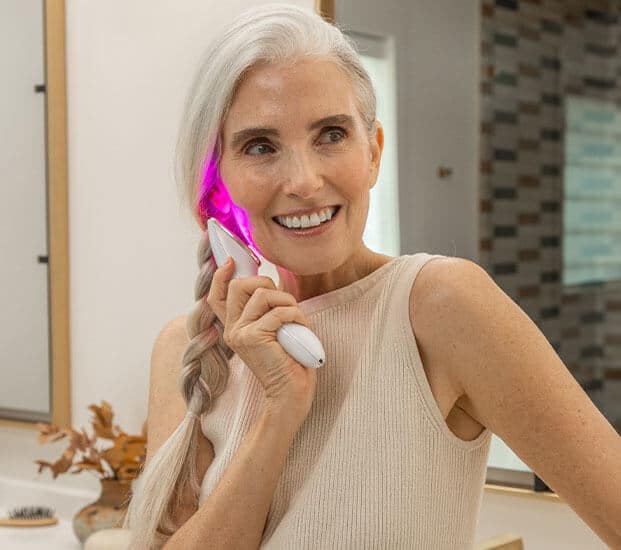
Experience the power of light therapy at home
Specific wavelengths of light have different effects, and can be used for a variety of applications — from destroying acne-causing bacteria to killing harmful germs on your phone. Our light therapy devices allow you to harness the power of LEDs in the comfort of your own home.
See How It Works